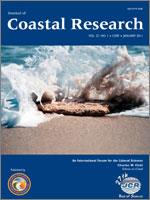The Coorong is an elongated coastal lagoon system in southern Australia whose major freshwater input occurs through a series of barrages separating it from an adjacent lake. The connectedness of the lagoon to the sea continuously evolves as its Mouth channel is scoured by sustained outflows associated with barrage discharges or is infilled with sand during times of zero flows. A key driver of the Coorong dynamics is oceanic water-level fluctuations propagating into the lagoon, and the representation of the continuously changing transmission properties of the Mouth channel for these fluctuations is a necessary requirement for the successful modelling of these dynamics. This paper applies a methodology for estimating the effective bed elevation and width of the Mouth channel by considering how oceanic water-level fluctuations propagate into the Coorong. The analysis applied to 22 years of measurements shows how the effective depth of the Mouth channel has been highly dynamic, varying between more than 5 m to less than 0.5 m depending on barrage flows. A simple algorithm is developed that well represents the time series of effective bed elevations as a function of Mouth channel outflow. This algorithm enables the hydrodynamic modelling of the Coorong to be undertaken to assess the impact on the lagoon of alternative barrage release strategies.
How to translate text using browser tools
1 January 2011
Dynamic Assessment of Oceanic Connectivity in a Coastal Lagoon—the Coorong, Australia
Ian Taylor Webster
ACCESS THE FULL ARTICLE

Journal of Coastal Research
Vol. 27 • No. 1
January 2011
Vol. 27 • No. 1
January 2011
Coastal lagoon
dredging
estuary connectivity
Inlet hydraulics
tidal transmission




